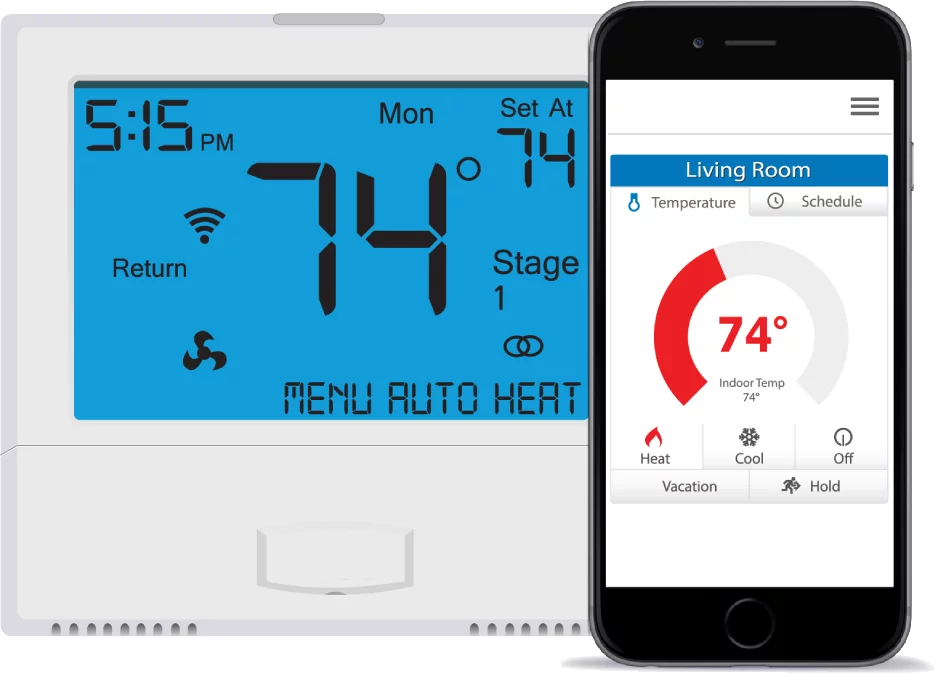 Companies with successful IoT products frequently outgrow their initial Internet of Things solution. Whether a homegrown solution which does not scale well or costs too much to operate or a third-party Platform-as-a-Service (PaaS) that does not accommodate the new desired features, sometimes you need to migrate to a completely new solution to be able to advance to the next level. This was the unfortunate case for a leading smart home brand when it approached us about IoT migration: its existing platform failed to deliver the control and agility required.
Companies with successful IoT products frequently outgrow their initial Internet of Things solution. Whether a homegrown solution which does not scale well or costs too much to operate or a third-party Platform-as-a-Service (PaaS) that does not accommodate the new desired features, sometimes you need to migrate to a completely new solution to be able to advance to the next level. This was the unfortunate case for a leading smart home brand when it approached us about IoT migration: its existing platform failed to deliver the control and agility required.
Tasked with migrating the client’s connected devices from a PaaS IoT platform to a custom solution utilizing ESP RainMaker, our IoT engineering experts developed a comprehensive migration strategy and performed the subsequent implementation. The resulting solution gives the client the control and flexibility they need going forward, as well as full ownership of their cloud environment and IoT data.
Leveraging RainMaker’s robust foundation, which provides 80% of common IoT features, we delivered a highly cost-effective custom platform solution. This empowered the client with complete control and flexibility over their system, along with full ownership of their cloud environment and valuable IoT data – eliminating previous limitations and enabling future innovation.
Breaking Free: The Challenges of IoT Migration
Migrating from the PaaS IoT platform to a custom solution that utilizes RainMaker was about gaining control over feature implementation, user data and quality. Our client’s mobile app struggled with a mediocre 2.8-star rating in app stores, while lengthy response times from the platform provider hampered their ability to implement improvements that would have improved the star rating. Most critically, the company lacked the autonomy to customize its customer-facing applications and infrastructure.
While not a complete solution on its own, RainMaker provides 80% of the features common to all IoT products thereby greatly lowering development costs. RainMaker’s implementation anticipates that brands will want to differentiate their unique IoT products, hence the 20% custom implementation by the brand or an outsourced engineering team such as Cardinal Peak.
The PaaS solution’s infrastructure also posed technical challenges including:
- The platform’s proprietary communication protocols meant every device had to be reconfigured to operate on RainMaker.
- Security was another consideration, as the transition had to authenticate authorized devices with the new cloud infrastructure.
- Finally, thousands of devices were already in the field, requiring a seamless over-the-air (OTA) update to complete IoT migration without bricking thousands of user devices in the field.
Given these limitations and escalating costs, the status quo was clearly unsustainable.
Cardinal Peak designed, tested and implemented a remote IoT migration to efficiently and securely execute the transition.
Engineering the Shift with a Proven IoT Migration Approach
A seamless migration demanded our engineers develop custom migration software that facilitated the transition from the PaaS IoT platform to a custom solution leveraging RainMaker. Our solution centered on deploying RainMaker within the client’s AWS environment, giving them full ownership of their cloud infrastructure and data pipeline.
The first step was decoding the firmware. Our team studied the source code and documentation to understand how the existing firmware processed data, adapting it to RainMaker’s architecture. Then we migrated the existing databases, moving historical data from the PaaS solution into an Amazon S3 bucket where scripts would pull it into a database for further processing.
Cardinal Peak replicated a more efficient data architecture by integrating DynamoDB directly. Instead of routing data through S3, the new approach allowed the system to fetch data instantly via API calls, reducing latency and eliminating unnecessary processing. We created an additional database to support migration. The database mapped the PaaS specific metadata to RainMaker metadata such as Node IDs.
Our team developed a precise sequence to execute the migration from the PaaS platform and initiate communication with RainMaker:
- Deploy an OTA update containing migration instructions through the existing platform.
- Implement a secure MQTT-based trigger system to initiate the transition.
- Transfer device certificates through a custom temporary MQTT-based migration proxy that managed the secure transfer of approximately 10,000 device certificates before switching to the new cloud.
- Implement a hashing mechanism that prevents unauthorized access. Instead of sending plain-text credentials, devices generate a hashed signature that the cloud validates before granting access so only authenticated devices can communicate.
- Establish secure communication with RainMaker using AWS IoT Core.
- Complete the transition with final firmware updates through RainMaker’s native OTA capability.
IoT Platform Migration from PaaS to a Custom ESP RainMaker Solution

Leveraging AWS’s serverless infrastructure, we designed the system to scale effortlessly while maintaining optimal performance. The migration framework demonstrates how a well-architected migration strategy can eliminate platform lock-in, streamline updates and put IoT brands in complete control of their cloud infrastructure.
For this project, our client chose a two-prong approach. They elected to treat new and deployed IoT devices differently. While all new and future products connect to the RainMaker solution for the desired flexibility and control, previously deployed units remain on the PaaS platform. Our engineering team demonstrated the feasibility of a full migration, but the customer made the business decision to let previously deployed products age out due to the large number of products in market.
Powerful IoT Migration Results Within Reach
This project demonstrates the significant benefits of migrating IoT products to a comprehensive device management solution using RainMaker:
Enhanced development efficiency
The shift to RainMaker’s firmware-centric architecture streamlined development. Unlike the PaaS, where changes required coordination across cloud, firmware and application layers, RainMaker’s approach designated firmware as the source of truth, significantly reducing engineering complexity.
Improved user experience
The new platform provides a more responsive and feature-rich mobile app framework, enabling rapid implementation of user interface improvements and new features.
Operational control
By hosting RainMaker on the client’s AWS infrastructure, they gain unprecedented visibility into all critical components for maintaining and optimizing their operational IoT ecosystem.
Cost optimization
While RainMaker isn’t always the lowest-cost solution available, its comprehensive feature set and reduced engineering overhead promise a more favorable total cost of ownership compared to other IoT platforms.
Companies need not remain tethered to IoT platforms that no longer serve their needs. With careful planning and the right technical expertise, you can successfully transition to solutions that offer greater control, flexibility and cost-effectiveness.
Our IoT migration experience with this project yields valuable insights for companies considering similar transitions. The key to success? Well-defined requirements from the start and understanding that each IoT ecosystem presents unique challenges requiring customized solutions.
Ready to take control of your IoT destiny? Let us help you adapt, migrate and maintain a competitive advantage.
Markets
Partnerships
Tools
- ESP RainMaker
- AWS IoT Core
- DynamoDB
- Amazon S3



